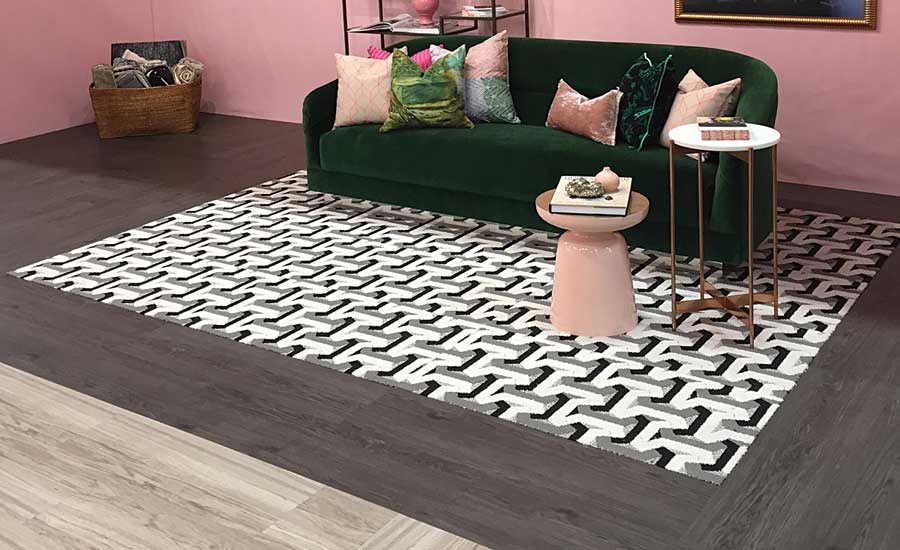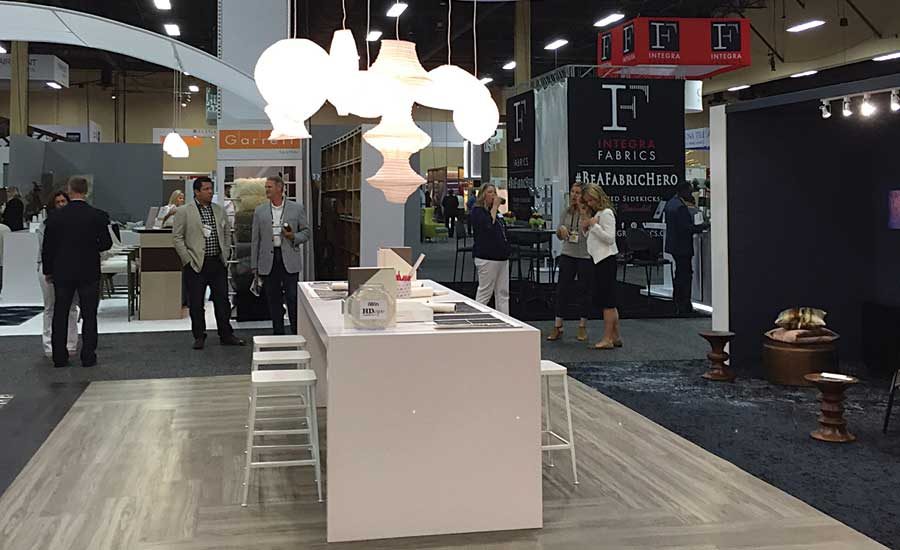This year at HD Expo, Interface Hospitality took a different approach with its booth. The space was set up as a real-life design studio, showcasing the company’s custom process and capabilities as a design service provider. Through show and tell, the company demonstrated its holistic flooring approach, which aims to positively shape the guest experience, deliver value to hotel owners, and enable hospitality customers to achieve their design intent.
The design studio was complete with a collaborative design space in the center, where the company showed how it will work with customers to bring their design vision to life. We spoke with Charley Knight, vice president of Interface Hospitality, about this approach to connecting with the architecture and design community and what it means for hospitality design.
FT: Tell us about the design studio you created at HD Expo.
Knight: Our hope was to show people how we engage with a hotel brand and give them a full understanding of how Interface Hospitality can bring a design vision to life. Our custom process and capabilities allow for a truly collaborative partnership that results in a beautiful product for hotel settings, whether in guestrooms, corridors or public spaces. The custom process starts with design inputs and inspiration from customers. Using a “designer to designer” approach, we develop custom patterns for composed and integrated floors, leading to a completely customized project.
FT: How was it received by show attendees?
Knight: From our perspective, the show went great. For people in the design world, as soon as they walked into the studio, they got it immediately. They understood that we were telling them about our process and studio and our custom capabilities. There were two different sides of the exhibit with a big working studio in the middle. We had a Pinterest board in the studio where we had color boards and images and tear sheets to create the mood. We showed iterations of things that might take us down a path and then the fully realized floors. The feedback I received is that we demonstrated that we are uber capable of taking an inspiration, and in the end, seeing the manifestation of a designer’s inspiration realized. We tried to do it in a private guest room setting and we did it in a large public space. They were quite different in both cases. We integrated a number of different products, including LVT [luxury vinyl tile] and carpet together.
FT: Why was this approach important this year?
Knight: Historically, what we’ve done is try to demonstrate what’s possible with modular flooring. We have been pushing the envelope and elevating the projects Interface Hospitality gets involved with, and to do that we needed to take a different tactic of starting with a white board from scratch. It’s about custom work and creating something that has never been created before. We wanted to demonstrate the design journey or the designer.
FT: Is there a certain size a project must be for Interface Hospitality to get involved?
Knight: We love to work on a range of projects. While there’s nothing better than a large purchase order, sometimes it’s about demonstrating something spectacular for a hotel guest in a smaller space—the perfect rug in the perfect spot or a hotel corridor to a ballroom. The size doesn’t matter so much to us as really having a great understanding about what the designer is trying to accomplish. Sometimes the most innovative projects have been small spaces. And to have the opportunity to work with someone for the first time, we are more than pleased to do something really small.
FT: What are some of the hospitality trends or ideas you are hearing from your customers?
Knight: The big thing we are hearing about right now, and it’s not even a trend, it’s a growing way to start a project by brining nature indoors. Biophilic Design is picking up a lot of momentum. How the impact or touch of nature in a space impacts the end user of space. A room with a view is worth a lot more than a room without a view. Views of nature or water or landmarks and understanding their relationship with hotel rate. The flooring industry is pretty fascinating right now. You are seeing the interaction of soft and resilient surfaces in the guest room and public spaces.
FT: Earlier this year, Interface announced it had entered the hard surface flooring category with a range of LVT. Why was this an important category for you to enter?
Knight: For LVT, we entered the category a lot later than many of our competitors. They got in wanting to sell LVT, and we wanted to solve a problem. If we can approach the design dilemma or the customers’ point of view, that’s what happens. We don’t have a range of LVT from the low end to the very high end. We are trying to pick a very specific lane: high-quality, 4.5-mil product that is created by our team and marries perfectly with our carpet. People hate transitions from one flooring type to another, and while there are some wonderful transition companies out there, we find that the most elegant solution is have a collection of hard and soft tiles that seamlessly fit together.
FT: How is the LVT category doing so far?
Knight: I haven’t looked at the data in the last 60 days, but it’s the fastest growing category out there. In the lodging business, it’s interesting that a lot of people jumped in head first without sticking their toe in the water. They are finding that LVT is a great experience for the user. It has the feeling of being cleaner, but it can create a lot of acoustical issues for the people below or in the next room. However, the combination of LVT sold with carpet—I can tell you it’s growing rapidly. LVT is a catalyst to sell more product, but we are playing in places that we haven’t played before and we’ve found new carpet opportunities.






Report Abusive Comment